For most of us, speakers are the most common choice for vinyl playback. Speakers allow you to fill the room, generate an atmosphere and share the musical experience with friends and family.
There are times, though, where a set of great headphones and a more private listening experience is advantageous, or perhaps (if you live with housemates or close-contact neighbors), completely necessary.
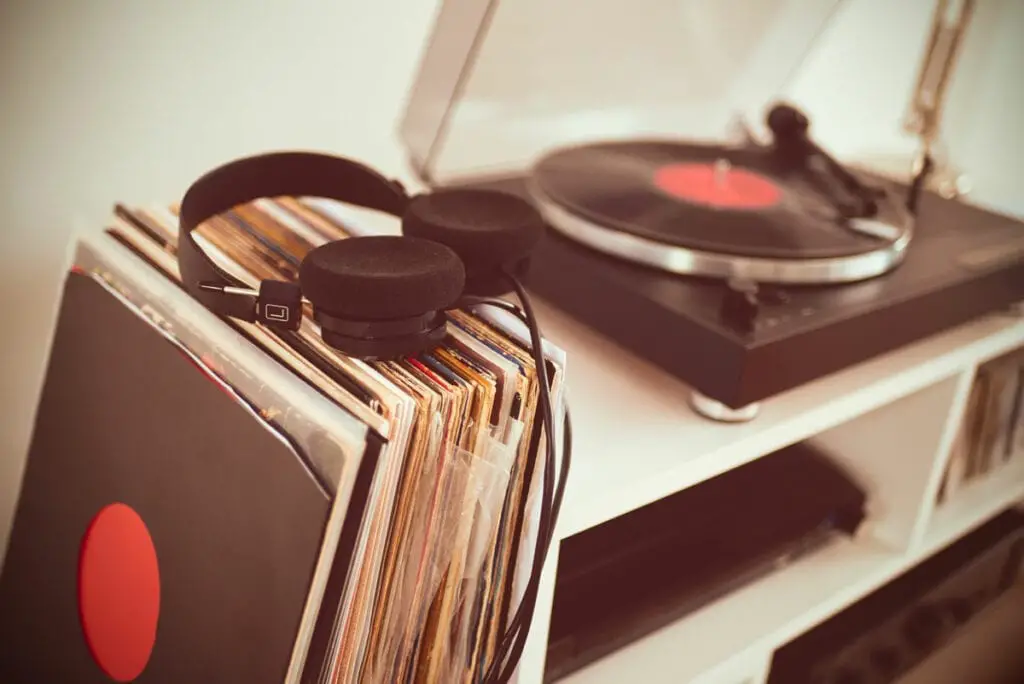
Headphones are also beneficial if speaker placement is a challenge in your listening space. With a good set of cans (headphones), you needn’t worry about the science of room acoustics, stereo imaging, or wall proximity. Even a modestly priced pair of Hi-Fi headphones will enable you to reveal deep detail and perfect soundstage presentation from your favorite albums. For those living in apartments or smaller homes, it’s often the only way to achieve a critical listening experience.
On the contrary, such an up-close and intimate listening experience will also more closely reveal any flaws or imperfections in your vinyl, such as surface noise or groove wall damage. It’s a far less forgiving listening experience, but one that will drive you towards better record care and perhaps even a few turntable upgrades. With more detail comes the good, the bad, and the ugly. When I really want to assess the quality of a particular pressing or a new cartridge, I always take the time to reference on a good set of headphones.
So what are the best headphones for vinyl records? Here are the top picks for listening to records ranging from affordable to higher-priced gems.
AKG K72
I wanted to include at least one model on this list in the sub-$100 price point, as the world of vinyl and Hi-Fi can be quite an expensive journey. Fortunately, and increasingly, in fact, the barrier to entry for those seeking a true audiophile experience on a budget is dropping day by day.
The K72 from AKG is a testament to this fact; a gripping, Hi-Fi experience doesn’t get more affordable than this. Perhaps it’s AKG’s years of pro audio experience, but it’s hard to believe the size and scale of how these sound at such a bargain-basement price. On a strict budget? Look no further.
Price: $40/£45 | Design: Closed Back
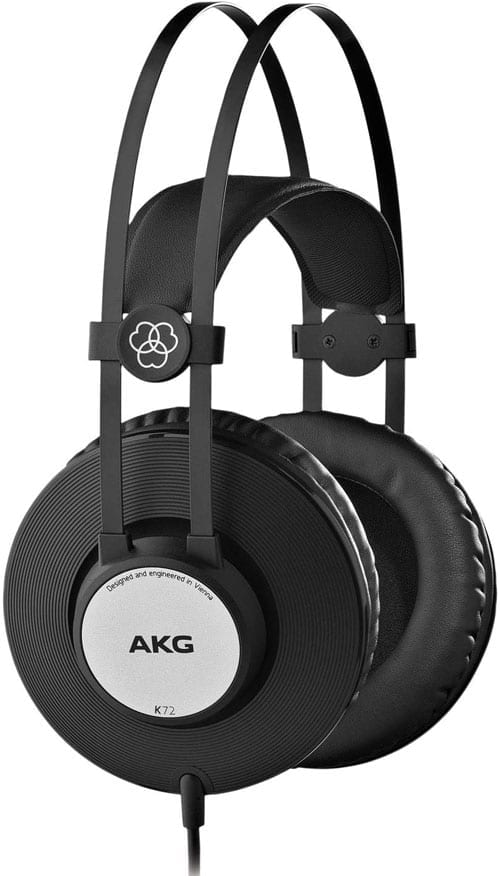
Grado SR80-x
Grado manufacture superb phono cartridges, and therefore know a thing or two about designing vinyl-friendly headphones. The SR80-x is the latest, upgraded release of their first-ever model dating back to 1991.
For such a reasonably priced set of cans, you get a superb soundstage and an exceptional amount of mid-range detail. The SR80 and its lower-priced cousin (the SR60-x) are open-back headphones, which deliver a more natural, open, or “airy” sound and a wider stereo image. The downside, of course, is private listening. Some sound will leak into the room. Circumaural designs that completely enclose your ears offer more in the way of sound isolation. The bass will be more pronounced but less focused and tight compared to open-back or supra-aural designs, such as the Grado SR80-x.
Price $125/£99 | Design: Open Back
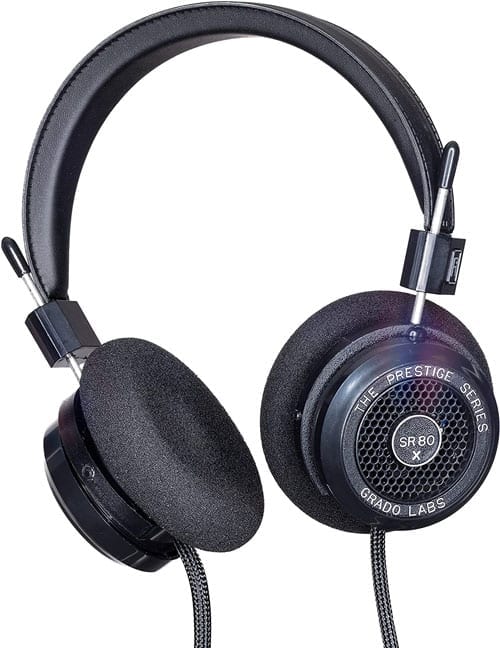
Beyerdynamic DT750 Pro
Perhaps it’s my music technology and studio production background, but I’m rather fond of closed-back studio headphones for long critical vinyl listening sessions. They tend to be very comfortable as they’re designed to be worn for many hours in studio recording or mixing sessions. This is an important factor when choosing headphones for vinyl, as the format is synonymous with true, active, and critical listening. Unlike firing up Spotify or sitting on the train, spinning a record usually involves a more profound, engaging listening experience that could last hours.
The DT750 Pro is an extraordinarily comfortable set at a very reasonable price. They’re famed for their superb bass response too, so if you like your music with plenty of bass in your face, look no further.
Price $149/£109 | Design: Closed back
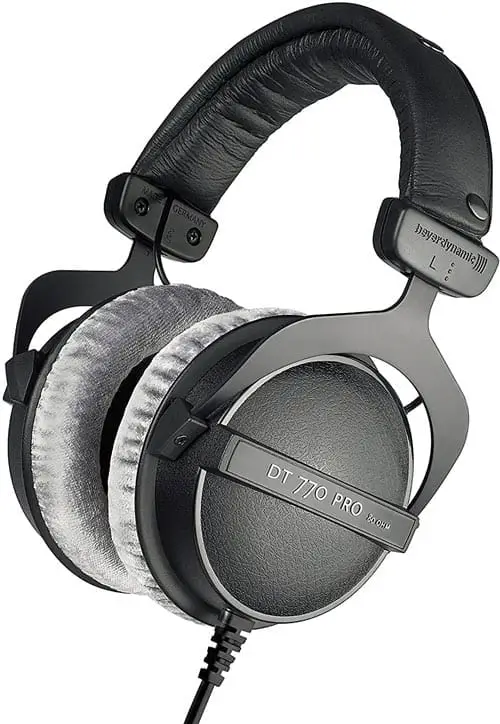
Sennheiser HD 560S
Sennheiser make some of the best affordable headphones while also retaining the performance you’d expect at much higher prices. That’s not to say they don’t make great higher-end models; we just find their affordable models to be some of the best performers at prices the majority of vinyl enthusiasts can afford.
The HD 560S is tailored for audiophiles, with an open-back design for natural, expansive sound. The bass response is fast and crystal clear, while the treble has plenty of crisp clarity—hands down, some of the most honest sounding headphones in their class.
Price: $199/£169 | Design: Open Back
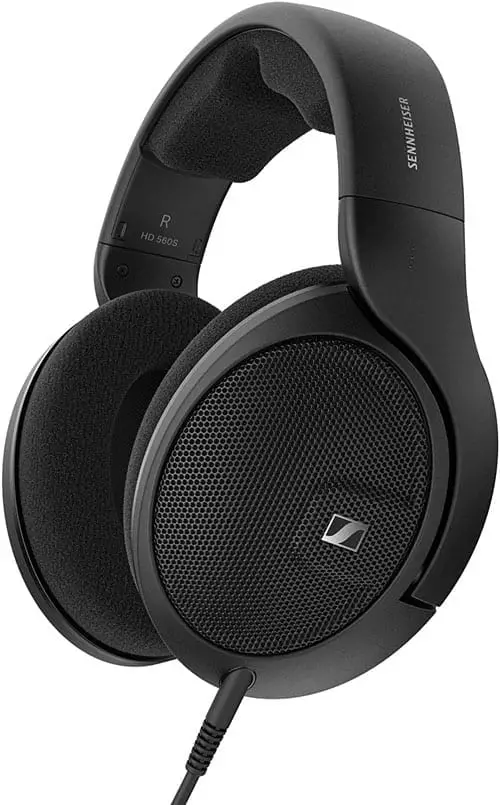
Shure AONIC 50 (Gen2)
Some of the Best Bluetooth Headphones for Vinyl
Though purist record collectors will favor wired headphones for an authentic analog listening experience, there’s no denying the convenience of modern Bluetooth connectivity.
The quality of Bluetooth sound and reliability of connectivity has come a long way in recent year. Shure were late to the Bluetooth market, but as a previous employee of the company, I can vouch for the engineering skill and desire to “get it right” when the time came.
The AONIC 50 model is based on Bluetooth 5 technology, offering a stable range of up to 30 feet (10 meters). The sound quality delivers everything you’d expect from a set of Shure headphones, but with the convenience of wireless connectivity to your favorite Bluetooth turntable and noise cancelation (invaluable in noisy household listening environments).
Price: $331/£330 | Design: Closed Back
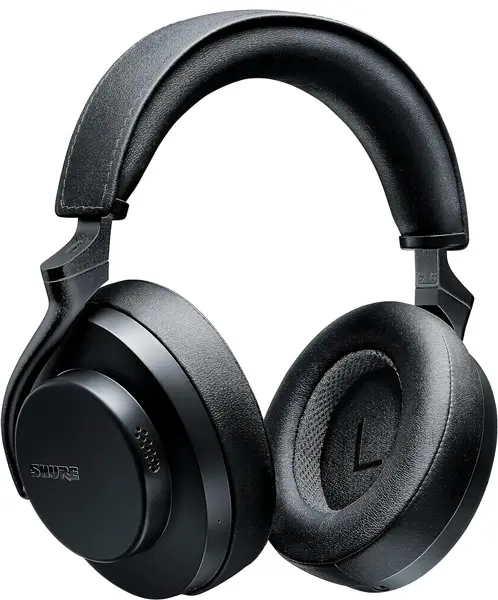
Meze Audio 99 Classics
Studio headphones aren’t for everyone, of course, and many Hi-Fi enthusiasts will prefer a more luxurious aesthetic. In this case, Meze Audio’s 99 Classics deliver high-end finishing details, such as the stunning walnut-veneered earcups. As vinyl is considered a premium listening experience, a bit of style goes a long way.
Sonically, they’re as pleasing to the ear as they are to the eyes. These beauties deliver a lush performance all around, with particular credit to the rich, warm bass.
Price: $309/£289 | Design: Closed Back
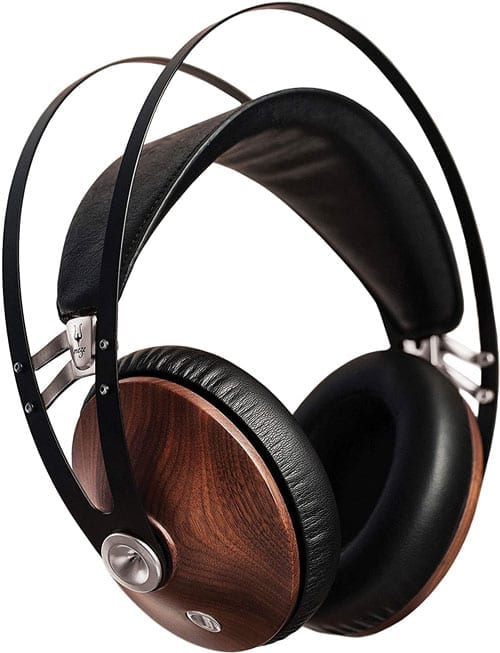
AKG K702
For true, honest clarity, the K702 from AKG brings all the detail front stage and center. Helped by the open-back design, these headphones are trusted by mixing and mastering engineers to reveal every musical detail. Bass heads might be left wanting, but vinyl enthusiasts seeking a critical listening experience will not be left disappointed by the sheer level of mid-range honesty and the expansive soundscape. You’ll be able to place each instrument perfectly and might even discover new details in records you thought you’d explored to the nth degree.
Price $425 | Design: Openback
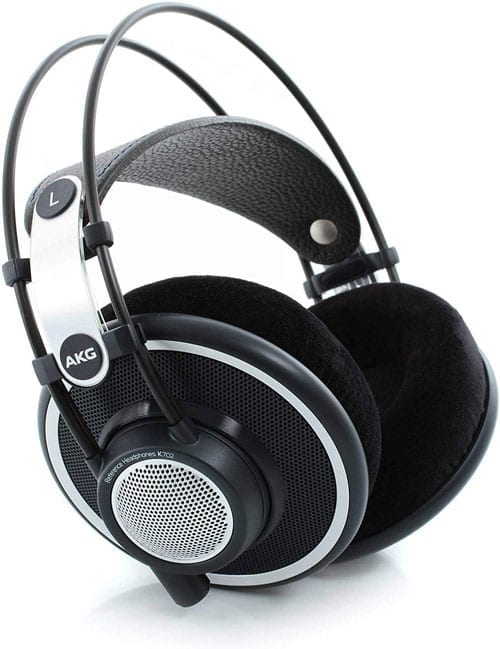
Shure SRH1540
From the world of professional studio recording comes a heavy hitter ideal for listening to music on vinyl. The impossibly soft Alcantara ear pads make these some of the most comfortable headphones I’ve ever worn for extended listening sessions. Best of all, the sound quality is superb. They are designed with 40 mm neodymium drivers for an impressively wide soundstage and expansive high-frequency detail. The bass response is warm and focused but not overwhelming.
Price: $399/£386 | Design: Closed Back
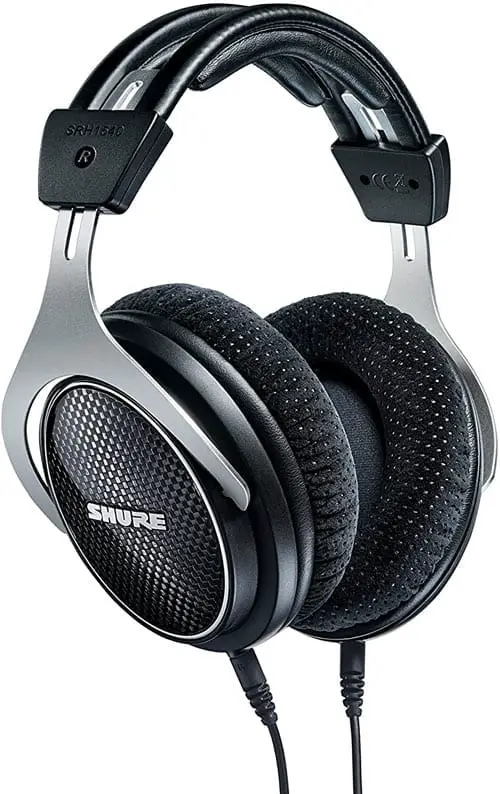
Beyerdynamic T5 (Third Generation)
The T5 is a more luxurious offering designed for use at home by the famed producers of studio headphones, Beyerdynamic. This fully closed design will keep your music contained, so you won’t have to worry about your choice of records leaking into the room.
These cans look and feel more high-end HiFi than any of Beyer’s studio models, thanks to features such as memory foam earpads with protein-coated leatherette, and the brushed aluminum framework. The T5 series (now in its third iteration of improvements) sound wonderfully realistic and natural. If you close your eyes, you can almost imagine each component of the music right there in front of you. For a closed-back design, they sound remarkably spacious.
Price: $799/£799 | Design: Closed-back
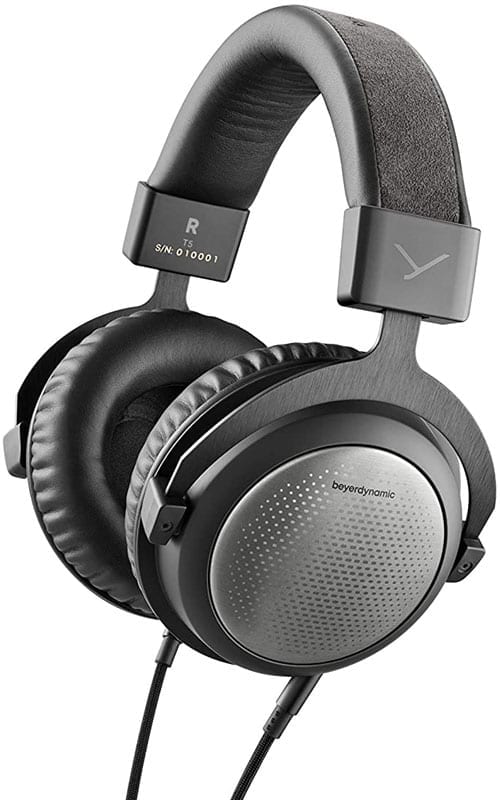
Sony MDR-Z1R
Simple in style from the outside, with a big, bold sound. The two-piece 70mm diaphragm on these cans gives them a huge, authoritative sound and an impressively wide frequency response.
Perhaps the most unique feature on these headphones is the grille. Most headphone grilles are very unassuming, but not these. Look closely, and you will see a very arty-looking pattern inside the cans. According to the engineers at Sony, they spent a great deal of time researching how grilles can affect the sound. In the end, they utilized a pattern based on the Fibonacci sequence.
Without going into too much mathematical detail, the Fibonacci sequence is a series of numbers (0, 1, 1, 2, 3, 5, 8, 13, 21, 34, etc.) The next number is found by adding up the two numbers before it. These numbers create patterns that often occur in nature, including branching in trees, the arrangement of leaves on a stem, and the fruit sprouts of a pineapple (to name but a few examples). The Sony engineers found this approach caused the least disruption to high-frequencies. Clever.
Price: $1798/£1650 | Design: Closed Back
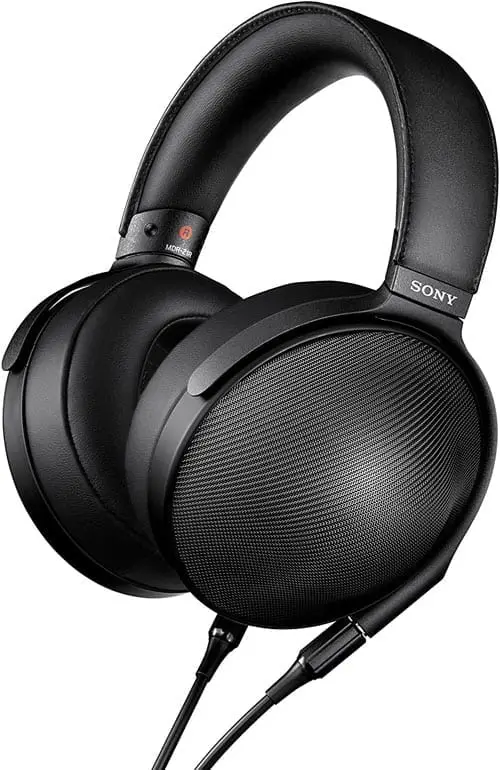
Focal Utopia
If your budget will stretch far enough, the aptly named ‘Utopia’ model from the French high-end audio specialists, Focal, is worthy of your consideration.
Clearly, the price tag will turn heads, but it’s safe to say, Focal has many decades of superb experience in speaker design that make them more than qualified to design superb performing headphones for the vinyl Hi-Fi market.
Once again, we’re looking at an open-back design here, which means you’ll need a private listening space if you want to be free of external distractions. By now, I’m sure you’re getting the picture: open-back headphones often sound more spacious and natural, but come with the downside of some bleed in and out of the headphones.
As you’d expect at this level, the sound is dynamic, authoritative, expansive, and exciting. Pair this with the right headphone amp, and they will sing for years to come. These are some of the best sounding headphones for vinyl out there we’ve heard. Costly, yes, but by no means the most expensive.
Price: $5000/£4699 | Price: Open Back
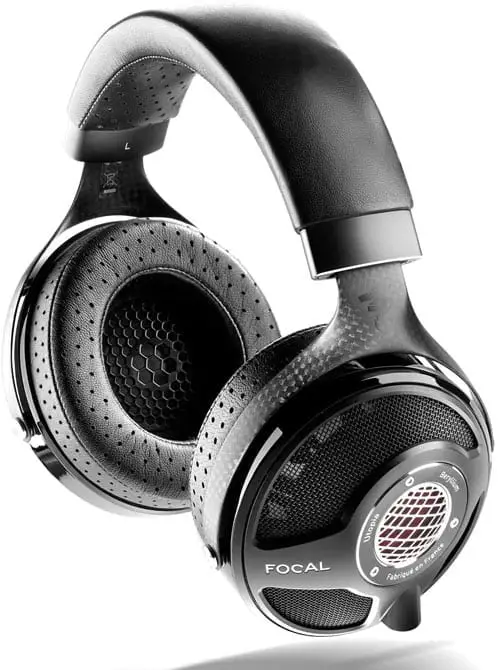
Points to Consider When Choosing Headphones for Listening to Vinyl Records:
Do Wireless or Noise Cancelling Headphones Sound as Good As Wired?
Wireless and noise-canceling headphones have many advantages; most of all, the freedom of removing cables and the added isolation of noise-canceling technology to aid in shutting out distractions.
With these upsides come a few trade-offs. Firstly, wireless Bluetooth headphones are (mostly) a lossy audio format, meaning the signal is compressed. Bluetooth technology has come a long way over the last decade or so, but it remains a trade-off for convenience from an audiophile perspective. There are now a number of Bluetooth turntables that enable direct links to wireless headphones, and while we recognize the convenience, we think Bluetooth is best saved for train travel and digital streaming platforms controlled from the comfort of an armchair.
Ultimately, finding the best headphones for vinyl comes down to a balance between cost, features, convenience, and your own personal listening circumstances.
Make Sure Your Headphone Amp or Integrated Amplifier Can Properly Drive Your Headphones.
Particularly as you enter the world of high-end headphones, you’ll want to make sure your system has enough output to drive your chosen headphones.
Some cheaper, integrated headphone outputs might not have enough power to drive Hi-Fi audiophile headphones. Check for the headphone impedance, sensitivity, and loudness. There are calculators available online that allow you to input these details to find the required power voltage for your particular set of headphones. Armed with these facts, you’ll be able to check against your current headphone amp or an integrated power amp to ensure you can adequately drive your cans for the appropriate volume and sound quality.

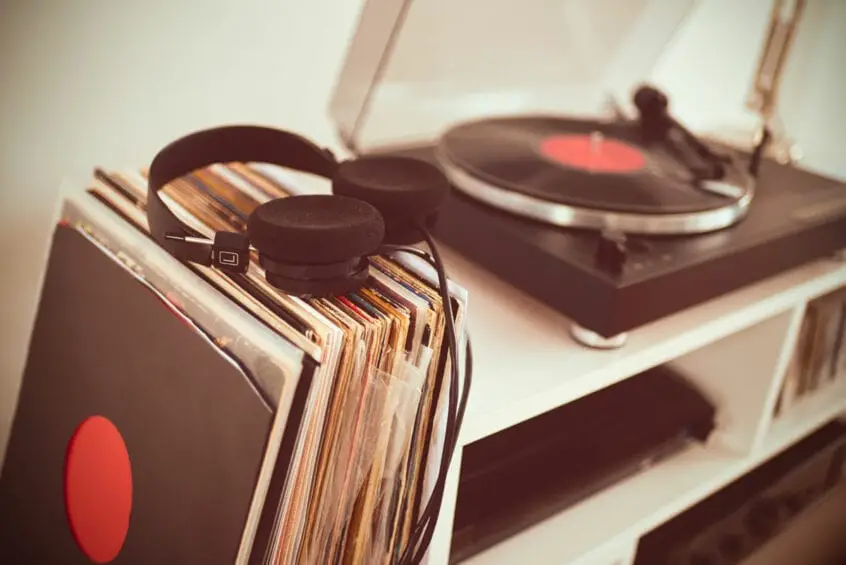


Interesting article. I’ve got a schiit headphone amp which I use to run my B&W PX7s through – noise cancelling but run with the cable and they sound great. Interesting about the amp and power though as I’ve got a set of B&O wired headphones which don’t work with the amp
I sometimes listen through my Base Audio G12 Headphones; made in the USA.
Hi, I have the Beyer DT-770 Pros (I assume the DT-750 is a typo) and the DT880s. I only listen through an Amp/DAC (ifi iDSD). I use the DT770s when there is someone else around, they are also my TV cans. However, I far prefer the DT880s when alone and seriously listening, I find them so comfortable and “convincing”, a perfect match to a turntable when the cartridge is tracking properly. But, they are totally unforgiving if things aren’t right.
I have other headphones, some much more expensive, but I use the Beyers the most – probably the comfort.
I regularly use two of the headphones in this list – The Grado SR80e and the Meze99 – They have amazingly close sound profiles to me – surprising since one is open back and the other is not. The other amazing thing is the sound produced… They are virtually indistinguishable from the stereo/speakers I have. I use multiple sources – digital mp3, ripped vinyl mp3 or FLAC, and straight from the turntable/amp – and both of these headphones sound great to me!
That is impressive. The Grado cans for sure. Both on the list for great reason. Glad you’re enjoying both.
I used to love pioneer headphones as I am into vintage gear. Perhaps in the future the old school gear might get a review too lol:)
That’s great, Kathy. I haven’t heard any Pioneer headphones first hand for a while now – glad they’re working for you!
Stay earspeakers are the best I’ve found and they have been around for years just look them up,a little pricey but there really is no better in my book it’s like siting between a set of quad EL 57 floor speaker
Ah, yes, electrostatic. Pricey, but really cool. Like the earphone/headphone equivalent of a moving coil cartridge – less inertia = more detail. Good shout.